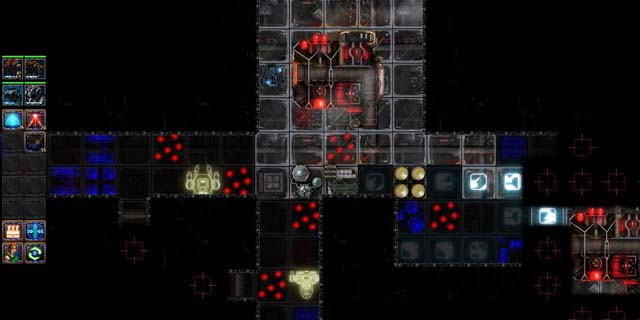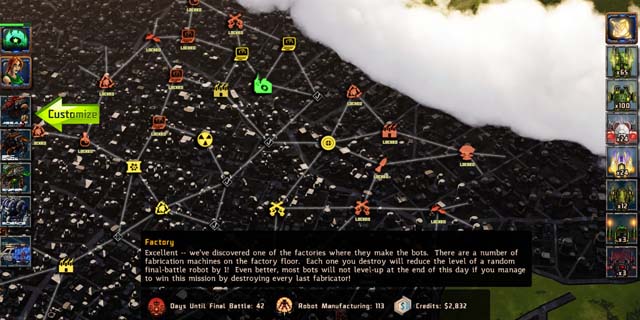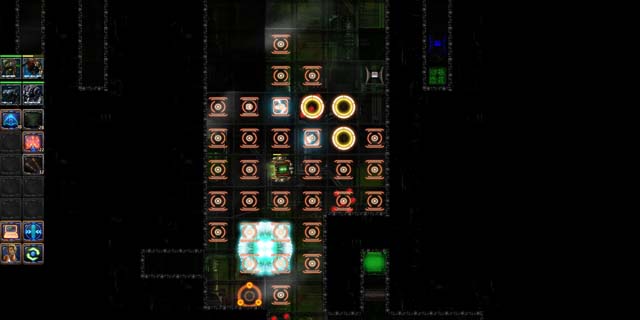
Bionic Dues has exactly what I want in a roguelike: direction. Most feature the absolute least amount of story possible: go to the bottom of the dungeon, get a thing, come back up and try not to die. Bionic Dues, like FTL before it, put just a little bit more into the story, and wormed itself that much deeper into me because of it. The scenario crafted by Arcen Games is an interesting one, and it means that there is a push to see the conclusion to the evolving story as well as the push of “just one more mission.”
The machines have gained intelligence, and they’re reproducing. If you can’t put down the rebellion in 50 days, your entire city will be bombed, leaving nothing alive, organic or otherwise. In order to win, you’ll need to prepare by taking on missions to strengthen your forces and to weaken the machines. Every move is useful; taking control of a power plant not only bolsters your forces for the final fight, but it lessens the machines’ ability to create and send in reinforcements as well. After 50 missions, regardless of how you perform, the machines attack your stronghold and you have to defeat them to avoid the impending bomb blast.

In each mission, your remote pilot controls a four-strong squadron of mechs. Depending on your strategy you can have different squadron configurations and different loadouts on each individual mech. Assault mechs are good one-on-one fighters, siege mechs are good against groups, ninjas are best at going after high-value targets one-on-one due to their increased stealth abilities and science mechs are good for hacking doors and terminals. Each mech can be outfitted with specialized equipment that can make it worthwhile to take, for example, two assaults with different kits, a siege and a science while leaving the ninja at home because you never remember to disengage stealth to effectively use it again.
Mechanics are easy to grasp but difficult to master, which is exactly what you want in a tactical game. I want to know that every time I fall down it was my fault, and Bionic Dues gives me that and then some. When somebody blows me up, it’s because my tactics were lacking, not because something was explained poorly. It’s my fault that I didn’t set a better trap. Or disengage stealth to save some charges. Or remember to switch from my science mech to my assault mech. And since that change takes a turn it’s too late to change for free once the enemy has spotted you and combat has started.

The ins and outs of combat are super easy: move with WASD, select weapons and actions with the left mouse button and select targets with the right mouse button. You can hold shift to free-aim if you’re feel fancy (very handy with explosive weapons), and after that, whether you survive is a question of your strategy versus the opponent’s number of reinforcements.
And there are a lot of reinforcements. It makes sense, too. After all, you may be assaulting a robot-making factory in the middle of a robot uprising. If they can make more, they’re going to, and they’re going to guard the building where all of that production is happening. My only gripe with the combat is that the enemy AI isn’t fantastic. They’ll never set traps for you, and it won’t occur to the sixth mech to hang back after the five before him all blew up going around the corner, yelling “why was I programmed to feel pain!?” as he does it.

The customization is deep, the combat is simple but fun and the aesthetic is reminiscent of computer games of the ’90s. The constant push forward is welcome, and while I can lose, it’s nice to know that there are no bad decisions to be made in terms of mission selection. And any game that lets me customize mechs gets bonus points. It’s great fun to trade out augments and try them out on the next mission. Bionic Dues is fun enough that you’ll find yourself playing another and another, and then going to bed far later than you’d initially intended.
Pros: Fun mech customization, interesting narrative, simple mechanics
Cons: Voice work isn’t very good, hard to believe that such dumb enemies rose up



















